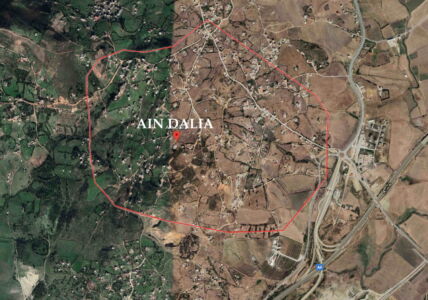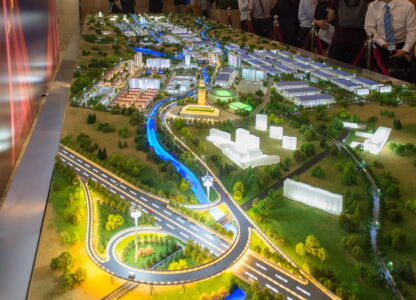The new technology and manufacturing hub will rise in Ain Dalia, part of the Belt and Road Initiative. It will host 200 Chinese companies avoiding tariffs that might be imposed on Chinese products
According to China Africa Research Initiative, from 2000 to 2018, China invested more than $148 billion in the African Continent as part of the China-Africa Cooperation. The construction of monumental infrastructures is increasingly becoming part of the ambitious programme of China’s Belt and Road Initiative (BRI) to increase trade and stimulate economic growth by improving the connectivity between Asia, Africa and Europe.
One of the latest projects launched in Africa is the Mohammed VI Tangier Tech City, a joint project between the Moroccan and the Chinese government. The project was initially announced in 2016 in occasion of Morocco’s King Mohammed VI visit to Beijing, when the two countries signed important agreements, among them the loosening of visa restrictions on Chinese citizens to stimulate tourism to the North African country.
In spite of the initial enthusiasm, disagreements concerning the ownership of the new giant smart city held back the launch of the project due to the retreat of the main Chinese sponsor, Haite Group. Notwithstanding, given the significance of the project, it was resumed again in April 2019 in occasion of the Belt and Road Forum in Beijing, when Moroccan BMCE Bank signed a an agreement with other two main Chinese developers, the state owned China Communications Construction Co (CCCC) and China Road and Bridge Cooperation (CRBC). On November 2020, within a virtual signing ceremony, the two countries finally achieved an agreement guaranteeing to the Chinese corporations 35% of the project’s share.
The Tangier Tech City, a technology and manufacturing hub worth $10 billion, is emerging on an arable land located in Ain Dalia at the outskirts of Tangier, a city that covered in the latest decades a strategic role in the development and economic growth of the country. The site of the novel ‘Smart City’ with its strategic geographic location, at the confluence of busy shipping routes, and just few kilometres away from the Strait of Gibraltar linking the Atlantic Ocean and the Mediterranean Sea, will undoubtedly determine new symbolic and physical connections between the old Continent, Africa and China. The new city is expected to host 200 Chinese companies, operating in food, automotive, aeronautical, renewable energy and textile industries. These companies will develop products for the export to African and European markets, and will benefit from Morocco’s free trade agreement with Europe and the US, avoiding in this way tariffs that might otherwise be imposed on Chinese products.
Tangier Tech City, with its monumental dimensions, 2000 hectares totally, is planned to be built in different phases and in 10 years according to Ilyas El Omari, the president of Tangier-Tetouan-Al Hoceima Region. Construction of the main infrastructures strengthening the connection of the Tech City with Tangier Med Port, has already began in 2019. Although the city is expected to boost the economy of the country by attracting investments from China and elsewhere, and creating more than 100,000 jobs, it is not yet clear if the workforce will be local.
The new large-scale city, dubbed by the local press as the ‘Shanghai of Morocco’, planned to host skyscrapers, residential, and industrial zones adopting the latest technologies and smart solutions, poses various questions. Although the projects promoted by the BRI are mostly addressed to bring investment, technology and trade to certain cities around the globe, it is plausible that urbanization principles and approaches typical of the Red Dragon may also be exported influencing the way cities and regions, interested by the BRI, will be developed and built in the future.
The development of Tangier Tech City may benefit the economy of the region, which seems to be the main objective for now, however it remains to see what impacts it will have on the territory and the environment, and how it will be integrated with the local physical and social tissues. Additionally, it doesn’t seem the new development was at the centre of public debate and involvement of the local communities. Consequently, whether it will result in gentrification and displacement in ways that may reinforce existing inequalities or whether it will benefit also the lower social classes of the northern Moroccan region are all questions that remain unanswered for now!






























